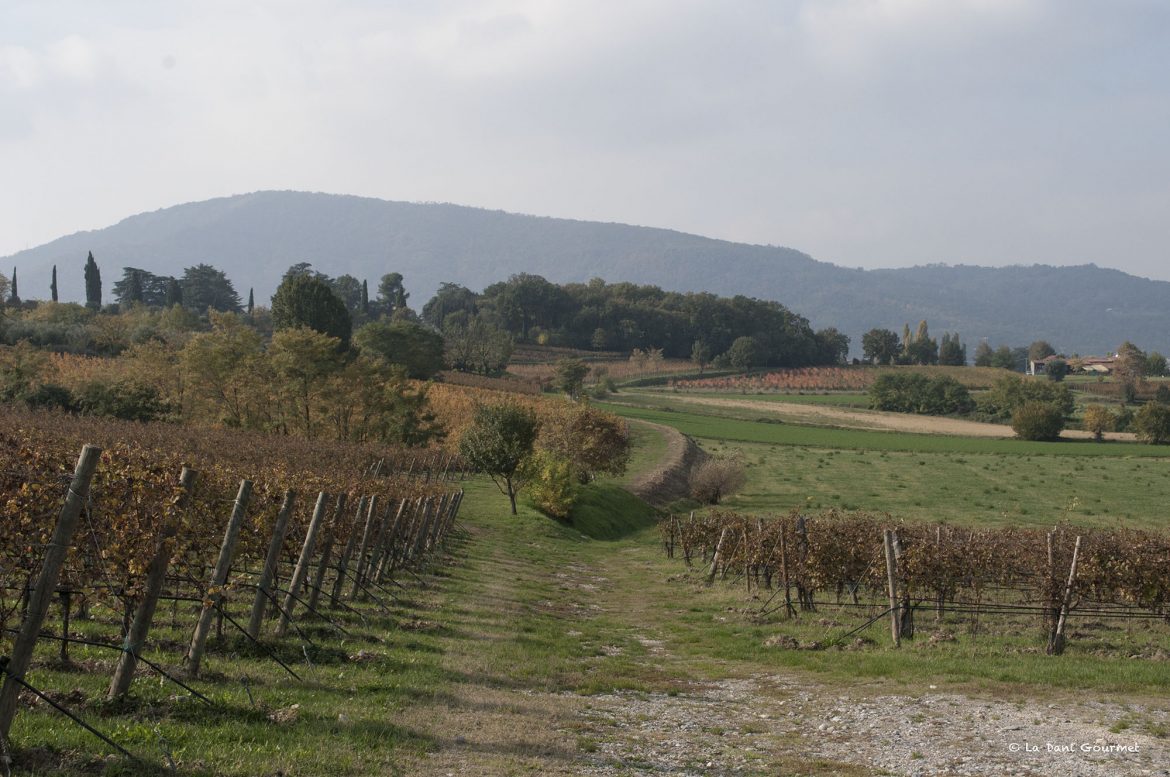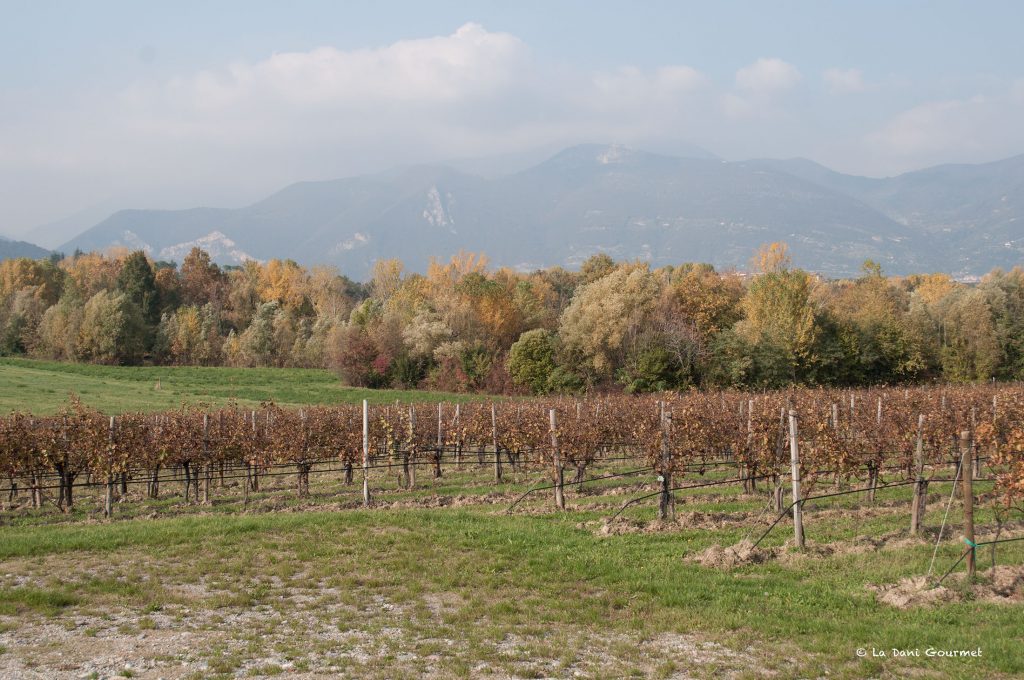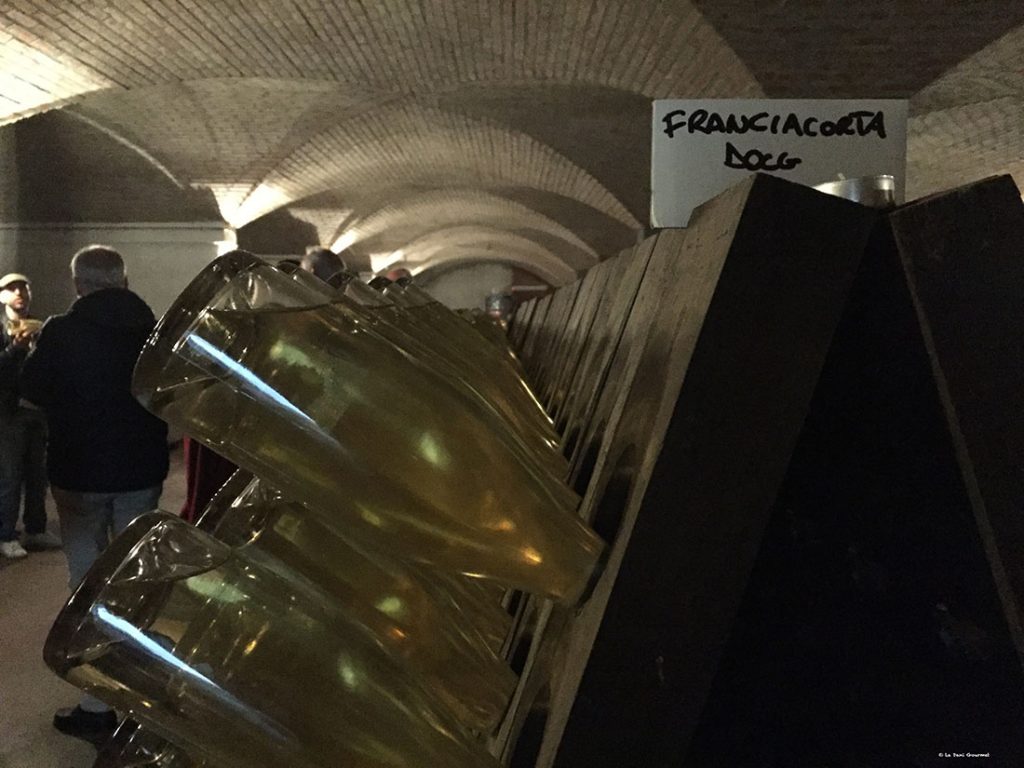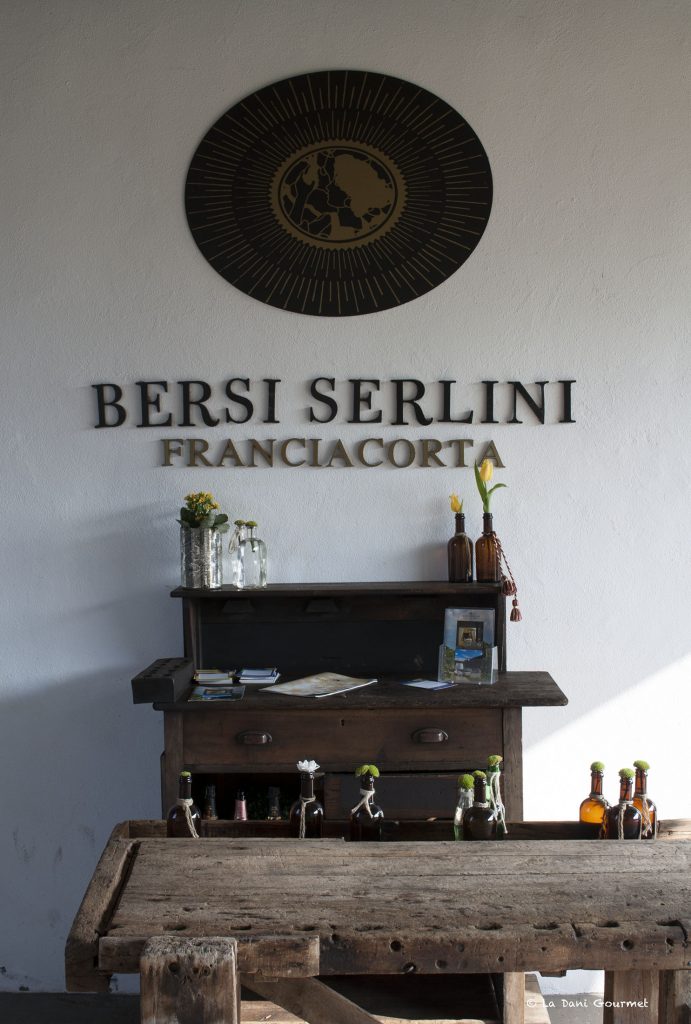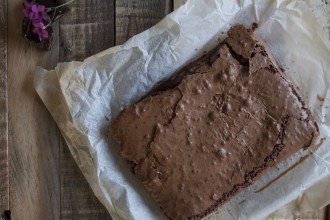During the All Saints holidays I was in Milan, and I had a free day for a daily trip. The perfect occasion to visit, finally, Franciacorta. I say “finally”, because this area is just forty-five minutes far form my native village. Quite a shame, since I’m studying to become a Sommelier.
Franciacorta is one of the most important wine areas in Lombardia. It’s located in the North-West province of Brescia near the Iseo Lake.
The name comes from “franchae curtes”, which indicated the properties of Cluniac monks, who were free from taxations. So, there’s no connection with France, but it turns out anyway, that this area was suitable for producing great Classic Method sparkling wine, as Champagne.
What does “Classic Method” mean?
A “Spumante” in Italian is the general name for sparkling wines; so wines that have developed carbon dioxide.
There are two main methods to obtain “bubbles”: the Martinotti Methos (or Charmat), used to produce wines like Prosecco, and the Classic Method (or Champenoise).
The Classic Method, as suggests the French name méthode Champenoise, is the one used to produce Champagne, and every other quality sparkling wine.
The acidity
Within this method, the acidity of grapes play a fundamental role. This is the quality, indeed, that permits the wine to age. It’s not a case that these sparkling wines are produced in cold areas – in Italy Trento DOC and Alta Langa are two examples. Here in Franciacorta the cold winds from Adamello guarantee the temperature excursions that give grapes acidity and aromas.
Grapes used for these wines are the one suitable for cold temperatures. Here in Franciacorta they mainly use Chardonnay and Pinot Noir, but sometimes also Pinot Blanc.
Still to preserve the acidity, they make an anticipated harvest, around mid-August. Grapes coming from the different particles are kept separated, and they are used to make different still wines.
The cuvée
After some months, they’re ready for the cuvée. Every white wines is tasted, and they are blended and mixed together with some wine aged in barrels.
The cuvée permits each producer to maintain a certain style and flavour, and that’s why the majority of sparkling wines are “without year”.
If you can see the year on the label, this is a Vintage (Millesimato in Italian), and it means that at least 85% of the grapes come from the same year.
Second fermentation (or bottle fermentation)
When the cuvée is ready, they add liqueur de tirage, a mixture of yeast, sugar and minerals, and they bottle everything.
Each bottle is closed with a bidule, a specific crown cap, and it’s placed horizontally to age. The disciplinary or Franciacorta DOCG indicates at least 18 months of aging on the lees, a time needed to develop bubbles, flavours and structure.
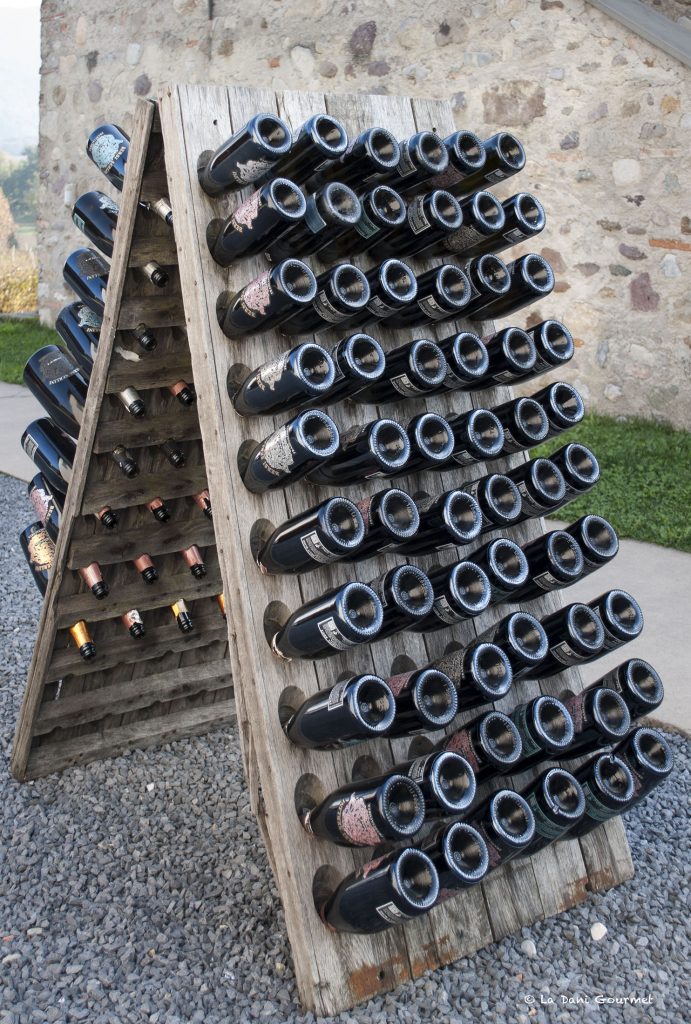
Remuage
After the aging period, it is necessary to separate wine from the suspended sediments.
Bottles are therefore placed on the pupitres, an inverted V-shaped system invented by Mme Clicquot, which permits the process of remuage. Each bottle is gradually turned of 1/4 twice a day, so that in some weeks they all get from an horizontal to a vertical position. In this way all the sediments are converted into the bidule.
Dégorgement
Now it’s time to remove this sediment.
Nowadays the most used technique consists in icing. So the bottles can be opened and the sediment removed.
There’s a slight loss of wine, which is replaced by liqueur d’éxpedition, a mixture of cuvée and different quantities of sugar, according to the type of spumante I want to get (Pas Dosé, Extra Brut, Brut, Demi-Sec).
Bottles can now be closed with a cork and after some months they’re ready to be sold.
Satén
Satén is a specific type of Classic method spumante, which is produced only in Franciacorta. It is a Blanc de Blancs, which means it is made only from Chardonnay and/or with a small part of Pinot Blanc. It features a pressure of the bottle below 5 bars, that makes the wine more silky.
Bersi-Serlini
I asked my colleagues at Fisar some advice about which cellar I could visit in Franciacorta. Among the suggested names, I was impressed by Bersi-Serlini, both for the quality, and for their amazing location.
The company is in Provaglio d’Iseo, in an isolated area where you can enjoy an amazing view over the lake and the vineyards. A place which deserves a visit in this period just to enjoy the foliage.
Bersi-Serlini has an estate of about 30 hectares, all distributed around the main property.
They were the second to produce Franciacorta in the sixties, right after Berlucchi, who was a real pioneer in the area.
Each phase is quality-oriented: they make green harvesting (dropping of unripe clusters of grapes), and both the harvesting and the remuage are completely manual.
Their entry-level spumante is called Anteprima, which has 20 months of aging on the lees, while Satén at least 30 months. I really liked the Cuvée n°4, which is 100% Chardonnay and makes 48 months on the lees.
The visit costs 14€ or 16€, whether you make two or three sample tastings.
Here below a short video of the day spent in Franciacorta.
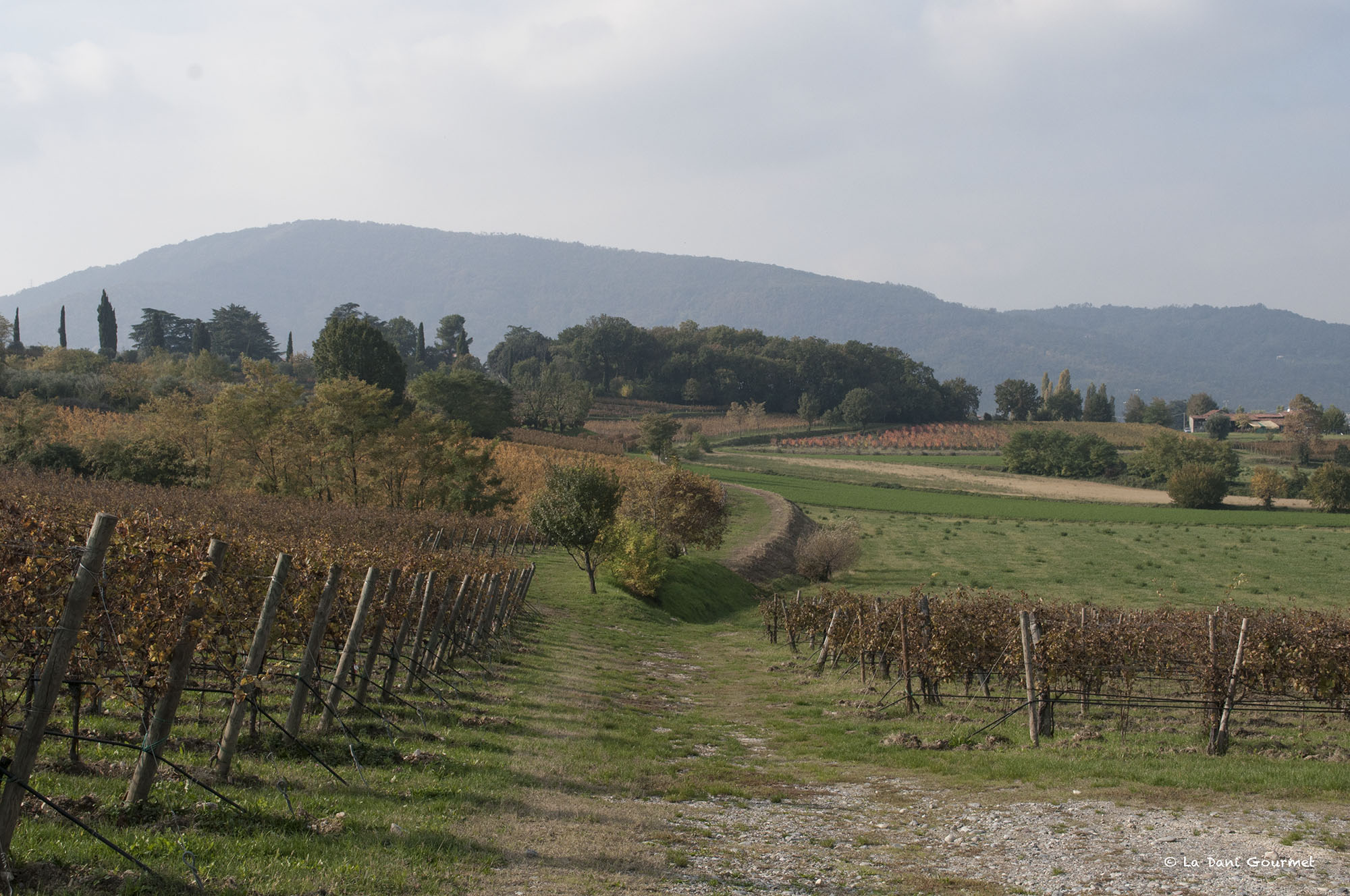
This post is also available in: Italian

